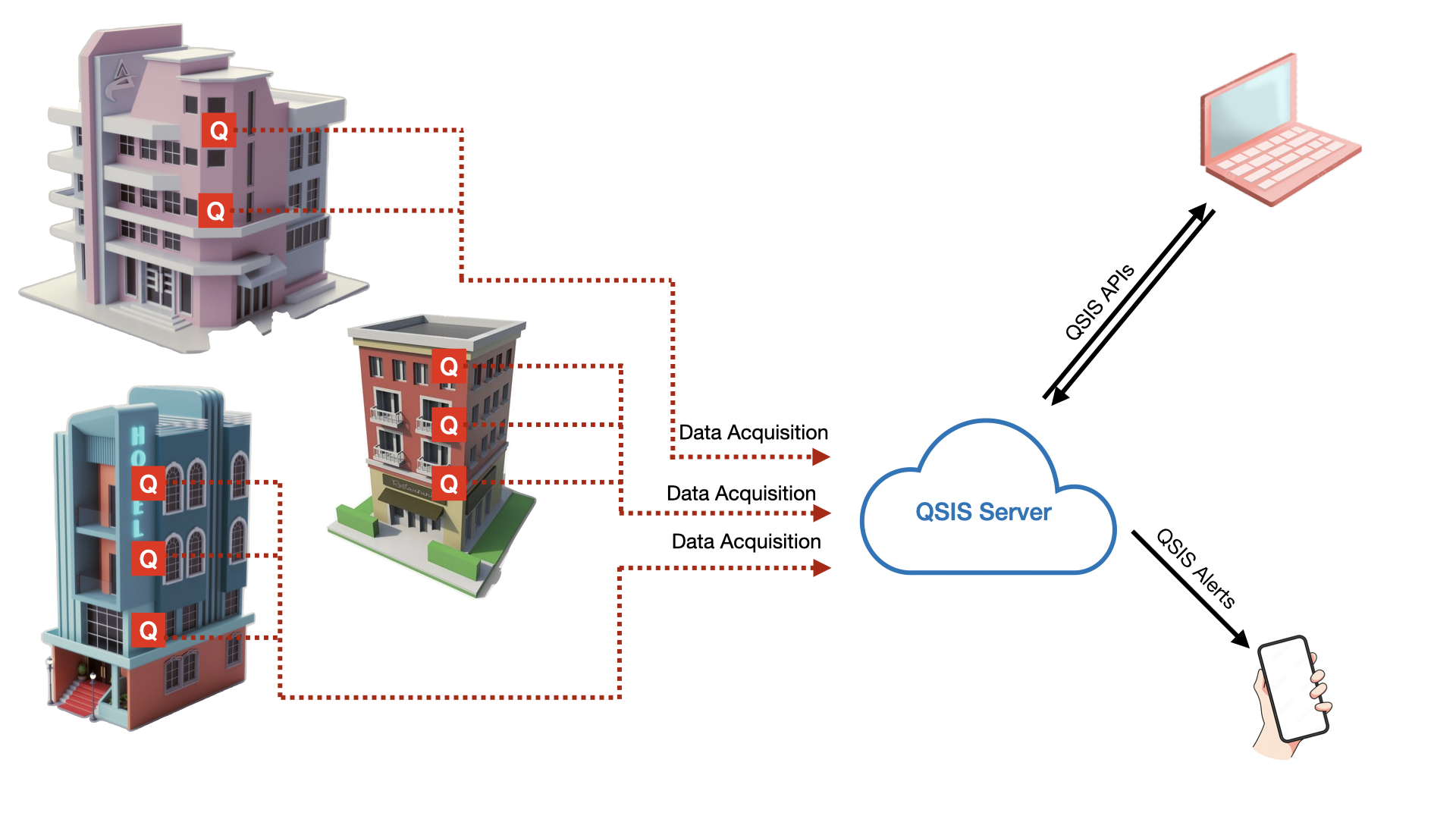Quake Structural Integrity System
High-performance and Scalable Structural and Seismic Monitoring System

About QSIS
QSIS is an innovative and scalable data acquisition system designed for structural and seismic monitoring of buildings. Utilizing low-cost MEMS accelerometers and advanced cloud computing technologies, QSIS can monitor the way buildings sway or vibrate to detect potential issues, offering a comprehensive solution for continuous monitoring and rapid assessment of structural integrity. This is crucial for residential buildings, hospitals, public infrastructure, and more.
Key Features
Advanced MEMS Accelerometers
High-precision Phidget Spatial MEMS sensors for accurate acceleration measurement, providing real-time data output for detecting minute structural changes and seismic activities.
Cloud Computing Integration
Leveraging cloud technologies for dynamic scaling of computational resources and storage, facilitating real-time data processing and analysis.
Edge Computing
Local data processing on the device, reducing latency and improving the speed and efficiency of data analysis.
Unified Monitoring System
A single, cost-effective, wireless network combining structural health and seismic data collection for holistic insights into building integrity.
Real-Time Alerts and Reports
Real-time seismic floor shaking intensity alerts and rapid seismic assessment reports for immediate response.
Automated Analysis Solutions
Detailed structural health analysis, including monitoring of local noise conditions, H/V spectra, AI-based earthquake detection, and tracking changes in building modal frequencies.
Privacy Protection
Ensuring data privacy with secure data collection and local storage options for sensitive installations.
Applications

Instant Shaking Alerts
Providing immediate notifications during seismic events for timely response and safety measures.
Residential Buildings
Providing continuous monitoring and assessment of residential buildings to ensure safety and mitigate risks during earthquakes.
Hospital Safety
Ensuring the structural integrity and safety of hospitals during seismic events to protect patients and staff.
Public Infrastructure Monitoring
Monitoring structural health and seismic activity in public infrastructure such as bridges, dams, and roads to ensure safety and stability.
Rapid Deployment
Quickly setting up aftershock monitoring arrays to track seismic activity in real-time.
Educational Networks
Facilitating the development of seismic monitoring networks in educational institutions.
Significance
Public Safety
Early detection of structural issues and real-time alerts during seismic or climatic events.
Sustainable Infrastructure
Continuous monitoring for timely maintenance, extending the lifespan of buildings.
Economic Efficiency
Cost-effective design accessible to a wide range of users.
Data-Driven Decision Making
Critical data supporting better building codes, risk assessments, and emergency response strategies.
Enhanced Community Preparedness
Real-time data and alerts for efficient emergency response coordination.
Support for Regulatory Compliance
Detailed records and analysis for demonstrating compliance with building standards.